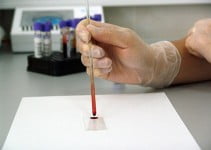Introduction
Conceiving is not the only goal of a sexual relationship. Various contraceptive methods are available that are being used to prevent pregnancy.
Couples usually prefer barrier methods of contraceptives, such as condoms, because of their ease of use, reversibility, and the added benefit of STD prevention.
Nevertheless, condoms are not 100% efficacious in preventing pregnancies. The risk of their failure is there, although a little. Keep reading to know more about the chances of pregnancy while using preservatives.

Risk of pregnancy with condom
Yes, there is a risk of pregnancy with condom usage even in a perfect scenario. Both male and female condoms have their efficacy close to 100% with perfect use.
This efficacy falls to a much lower level in typical usage. The efficacy of preservatives in preventing pregnancies is:
Male Condoms
- Perfect use: 98% efficacy
- Typical use: 85% efficacy
Diaphragm
- Perfect use: 94% efficacy
- Typical use: 84% efficacy
Perfect use of the contraception method is defined as a regular and consistent application without forgetting to use it at all.
This is not possible in a real-life scenario so researchers have come to the derivation of percentage efficacy with the typical, daily-routine, inconsistent and occasionally irregular use of contraceptive methods; referred to as typical use.
The efficacy of condoms is the number of women not getting pregnant with the use of condoms for one year.
Without any contraceptive methods, 85% of the women in their reproductive age will get pregnant during the first year of having regular and unprotected sexual intercourse.
But with the perfect use of male condoms, this percentage falls to 2% and 14-15% with the typical male condom usage. Female condoms are less likely to prevent sperm entry than male condoms.
The failure rate of condoms also depends on the material of the condom being used. Generally, preservatives can be divided into latex & non-latex types with each type having its perceived advantages and preferences.
A research study found that non-latex condoms are more prone to breakage or slippage during sexual intercourse than latex condoms. This makes non-latex condoms less efficacious, increasing their failure rate under such circumstances.
Other factors that increase condom failure rates include:
- Damaged condoms, especially microscopic damages without any visible appearance. Such damaged condoms are one of the causes of contraceptive failures.
- Leaving condoms in the wallet for a long period or using expired condoms also decreases their efficacy. Latex condoms have a lifespan of 5 years whereas condoms with spermicide should be used within three years of their manufacturing date.
- Latex condoms are prone to breakage if used with oil-based lubricants. Such breakage may not be obvious to the naked eye but can lead to holes in condom, allowing the sperms to pass and lead to pregnancy
Overcoming failure rates
The failure rates of condoms can be decreased with the use of spermicidal jelly. Spermicides contain nonoxynol-9 which kills the sperms and prevents them from fertilizing the ovum.
The sperms that escape from the holes in a broken condom are killed by the spermicide and thus the pregnancy is prevented.
The perfect use of preservatives remains the ideal choice for overcoming the chances of accidental pregnancy. Checking for the date of expiring and contraindications for the type of lubrication is also essential.
The combined use of contraceptive methods also improves contraceptive rates. The use of hormonal pills, IUDs, dermal implants, or sterilization along with the use of barrier methods such as condoms have the highest efficacy than any of the methods alone.
Using a natural method of contraception is one best strategy if you don’t want to overwhelm yourself with multiple contraceptive measures.
Every woman has a fertile window during which she “can” become pregnant if sperm is available to fertilize the egg. This period ranges from the time of ovulation until 5 days after.
Having unprotected intercourse during this period has the highest chances of conceiving than any other day during the menstrual cycle.
Abstaining from sex during the fertile window and using condoms for the rest of the days decreases the condom failure rates and thus the chances of pregnancy.
Conclusion
No contraceptive method, other than abstinence from intercourse, is 100% efficacious and reliable in preventing the pregnancy.
With a greater than 98% success rate in preventing pregnancy, the perfect use of condoms can still lead to pregnancy in 2% of the cases.
Minimizing personal errors during condom use, practicing multiple contraceptive methods at once, and having sex outside the fertile period can decrease the chances of pregnancy.
References
- Marfatia, Y. S., Pandya, I., & Mehta, K. (2015). Condoms: Past, present, and future. Indian journal of sexually transmitted diseases and AIDS, 36(2), 133–139. doi:10.4103/0253-7184.167135
- Morris B. A. (1993). How safe are safes? Efficacy and effectiveness of condoms in preventing STDs. Canadian family physician Medecin de Famille Canadien, 39, 819–827.
- Raymond, E. G., Chen, P. L., & Luoto, J. (2004). Contraceptive effectiveness and safety of five nonoxynol-9 spermicides: a randomized trial. Obstetrics & Gynecology, 103(3), 430-439.
- Steiner, M., Piedrahita, C., Glover, L., & Joanis, C. (1993). Can condom users likely to experience condom failure be identified?. Family Planning Perspectives, 220-226.
- Zhao, R., Wu, J., Yu-Yan Li, Ying Zhou, Hong-Lei Ji & Yi-Ran Li (2014). Efficacy of a combined contraceptive regimen consisting of condoms and emergency contraception pills. BMC Public Health 14, 354. doi:10.1186/1471-2458-14-354




 Ali Anique holds an MBBS degree from the Nishtar Medical University and currently works as a doctor at Nishtar Hospital, the biggest hospital of south Punjab province in Pakistan.
Ali Anique holds an MBBS degree from the Nishtar Medical University and currently works as a doctor at Nishtar Hospital, the biggest hospital of south Punjab province in Pakistan.